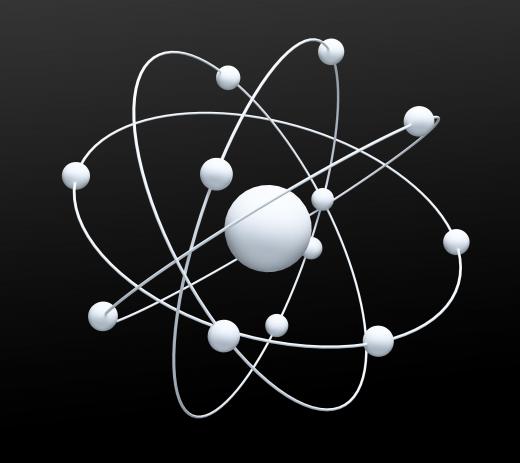What Is a Subshell?
A subshell is an area inside an atom's electron shell that contains a type of electron orbital. Each and every atom consists of a central nucleus of one or more positive protons and zero or more chargeless neutrons, with electrons traveling about it. An atom's electrons are not free to travel at random, but are, to a degree, bound. Just as books are organized according to the format of chapters, pages and lines, an atom’s electrons are organized into shells, subshells, orbitals. Unless electrons are energetically excited, they remain in those orbitals.
Assignments to shell and subshell designations are dependent upon a bound electron’s quantum mechanical characteristics. There are four such quantum numbers: "n," "l," "m" and "s." These are the energy-related primary quantum number (n) — associated with the Bohr model of the atom, the angular momentum quantum number (l), the angular momentum component vector (m) and the spin quantum number (s). The n-value defines the shell, and must be a whole number not less than one. If the primary quantum number n=1, the shell number is 1, also called the K shell; if n=2, the shell number is 2, the L shell; if n=3, the M shell; n=4, the N shell; n=5, the O shell; and so on.

Bypassing, momentarily, the description of the next level of order — subshells — electron orbitals are dependent upon the value of and electron’s angular momentum. Values of the angular momentum quantum number, l, can be zero or whole numbers greater than zero; if l=0, the orbital is an s-orbital; if l=1, it is a p-; if l=2, a d-; l=3, an f- and if the orbital has a value l=4, the orbital is a g-orbital. It is the l-value that determines the probability that an electron will be found within a certain region of space, that region possessing a definite shape. An s-orbital is spherical, whereas a p-orbital has two flattened spheres with the flat surfaces facing each other. The d-orbital's shape may have four closely associated orbs, or two orbs above and below a ring — higher values of l lead to other orbital probability shapes.
Every shell has one or more subshells, each of which can contain orbitals. Letters identifying the subshells match the orbital types they contain: a d-subshell contains d-orbitals, an f-subshell, f-orbitals. The number of the possible angular momentum component or m-values, multiplied times the number of possible spin quantum or s-values, determines the maximum number of orbitals that can exist within a particular subshell. Values for m can be any whole number between -1 and +1, including 0, whereas s must be either +1/2 or -1/2. Calculation gives us, in the case of an f-subshell (l=3), seven m-values and two s-values, resulting in a maximum of 7×2=14 possible orbitals.
Adding up the subshell orbitals gives us the number of possible orbitals in each type of shell. In a K-shell, there is only one s-subshell, which itself contains a maximum of two s-orbitals. Two subshells, s- and p-, are contained in the L-shell, and each subshell contains up to 2+6=8 orbitals. The three subshells of an M-shell, s-, p- and d-, can hold 2+6+10=18 orbitals, while an N-shell's s-, p-, d- and f-subshells hold up to 2+6+10+14=32 orbitals. G-shells include s-, p-, d-, f- and g-subshells, and can contain as many as 2+6+10+14+18=50 orbitals.
AS FEATURED ON:
AS FEATURED ON:











Discuss this Article
Post your comments